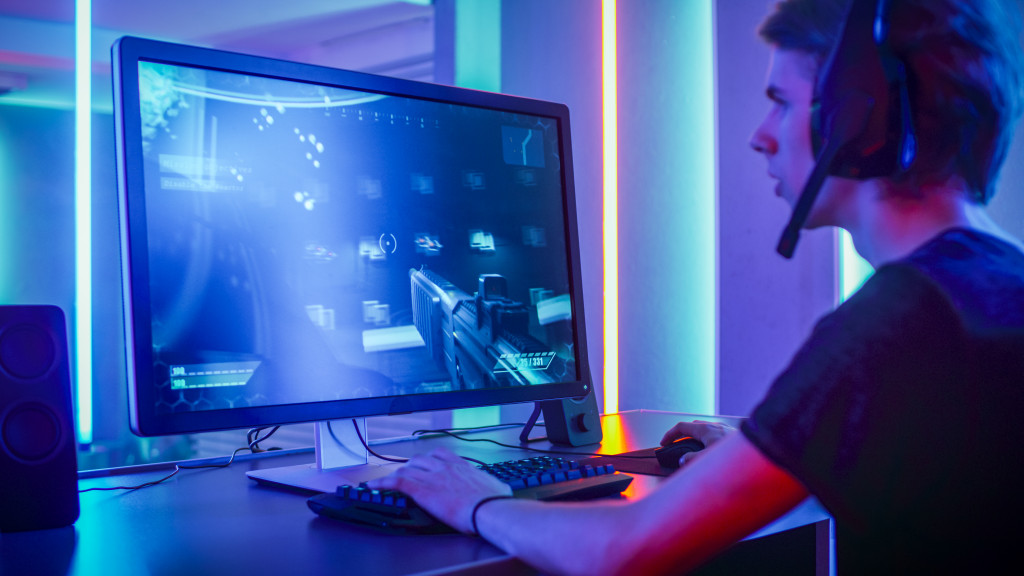Video games are not just about visuals. Sound design is as important as graphics and gameplay to create a world that feels real to the player. Sound designers use not only music and dialogue but also ambient noises to establish moods and environments for players, which can change how they feel about their surroundings depending on what they hear in the background.
What follows is an overview of sound design in video games: why it’s so crucial for this immersive art form, some of the best examples the gaming world has seen over time, and tips for those who want to break into this creative field themselves.
Sound design in video games
You don’t need to see it happen. You can hear bullets whizzing by, tell if someone is breathing heavily behind you before they attack, and get an idea of whether your foes are close even when you can’t see them. This is the true power of sound design in video games; developers can create worlds that players feel a part of through carefully crafted audio.
One of the earliest and most well-known examples is the 1975 game “Asteroids.” In it, sound designer Ben Burtt used a synthesizer to create the sound of the ship’s engines, adding to players’ immersion as they pilot their spacecraft through space.
Top video game sound designers
This industry’s best of the best do not limit themselves to just one title or franchise. Here are some of the most talented and well-known individuals who work as sound designers for various titles:
- Brian Tuey: Brian Tuey is a freelance sound designer who has worked on games such as “Borderlands 2,” “Destiny,” and the popular “Call of Duty” series.
- Harry Gregson-Williams: Harry Gregson-Williams is a film composer who has also worked on video game titles such as “Metal Gear Solid” and the “Call of Duty” franchise.
- Michiel van den Bos: Michiel van den Bos is a composer who has worked on games such as “Age of Wonders,” “Command and Conquer: Red Alert,” and “Halo.”
What you need to become a sound designer

If you’re interested in becoming a sound designer, it’s important to have strong music and audio production skills. You’ll also need to work well with others, as sound design is often a collaborative process. A background in music or a degree in music from a music college can also be helpful.
Some helpful courses to study include these:
- Audio production: This course will teach you the basics of audio production, including using recording equipment and software, mixing and mastering audio, and creating sound effects.
- Sound design: This course will teach you the different aspects of sound used in video games and how to put them together.
- Music composition: This course will teach you to write music for various genres, including film, television, and video games.
- Game audio: This course will teach you about the various aspects of audio used in video games and create a cohesive soundscape for players.
- Recording and mixing: This course will teach you how to record and edit audio, including using different microphones for various purposes.
Once you have the necessary skills, start looking for internships or entry-level jobs at game studios. It’s also important to build a strong portfolio showcasing your work and active in the online game audio community. Many helpful resources are available, such as the Game Audio Network Guild (GANG) website, which is a great place to start networking with other professionals in the industry.
How to become a sound designer
If you want to pursue a career in sound design, there are a few things you can do to increase your chances of success:
- Join a game developer: Getting involved with a developer from the beginning is your best bet at getting into this industry, as many studios prefer to hire people internally.
- Build a strong portfolio: Your portfolio should include samples of your sound design work, along with examples of any related abilities you have, such as writing music or editing audio.
- Be active in the game audio community: This will allow you to get exposure, meet other professionals in the industry, and learn more about sound design. After all, some experts have said that video games are the new social media.
- Attend game audio summits: These events are a great way to network with people in the industry.
- Take advantage of online courses: Several options available can help you build your skills and portfolio, such as Coursera and Udemy.
Video game sound design tools
Today, the most common tools used by professionals are digital programs that are also used in film production, such as Pro Tools or Logic. These tools help transform raw sounds into something more polished, adding effects to make them fit together perfectly with the rest of the game’s audio.
Certain programs are usually unique to sound design in video games, including Reaper, FMOD Studio, Wwise, and Unity 3D. These are more complex tools used throughout the development process, from creating sound effects to adding music. They can be extremely expensive, though, so if you’re starting, it’s best to focus on tools that are more accessible.
Sound design is crucial in video games. It’s an essential aspect of world-building. Without sound designers, the world would be robbed of memorable video games and other forms of media.

















